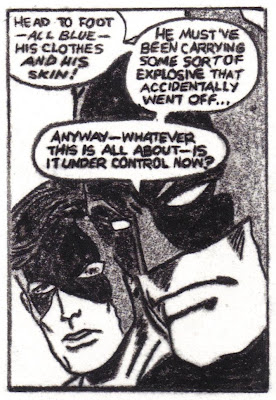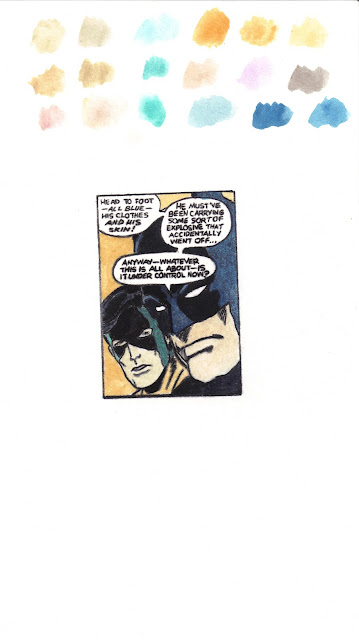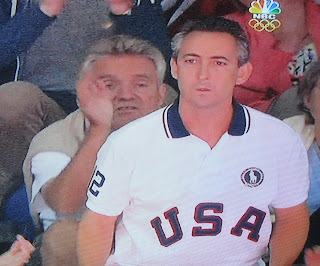June 10–October 8, 2012 at the National Gallery of Art
 When George Bellows died at the age of forty-two in 1925, he was hailed
as one of the greatest artists America had yet produced. In 2012, the
National Gallery of Art will present the first comprehensive exhibition
of Bellows' career in more than three decades. George Bellows
will include some 130 paintings, drawings, and lithographs. Bellows is
arguably the most important figure in the generation of artists who
negotiated the transition from the Victorian to the modern era in
American culture. This exhibition will provide the most complete account
of his achievements to date and will introduce Bellows to new
generations. The accompanying catalogue will document and define
Bellows' unique place in the history of American art and in the annals
of modernism.
When George Bellows died at the age of forty-two in 1925, he was hailed
as one of the greatest artists America had yet produced. In 2012, the
National Gallery of Art will present the first comprehensive exhibition
of Bellows' career in more than three decades. George Bellows
will include some 130 paintings, drawings, and lithographs. Bellows is
arguably the most important figure in the generation of artists who
negotiated the transition from the Victorian to the modern era in
American culture. This exhibition will provide the most complete account
of his achievements to date and will introduce Bellows to new
generations. The accompanying catalogue will document and define
Bellows' unique place in the history of American art and in the annals
of modernism.
The exhibition will begin with Bellows' renowned paintings of tenement children, boxers, and the urban landscape of New York. These iconic images of the modern city were made during an extraordinary period of creativity for the artist, from shortly after his arrival from Columbus, Ohio, in 1904, up to the Armory Show in 1913, and remain his best-known works. They include Forty-Two Kids, 1907 (Corcoran Gallery of Art), New York, 1911 (National Gallery of Art), Stag at Sharkey's, 1909 (Cleveland Museum of Art), and Snow Dumpers, 1911 (Columbus Museum of Art).
Complementing the earlier signature masterpieces will be groupings that bring to light other crucial, yet less familiar aspects of Bellows' prodigious achievement, including his Maine seascapes, sporting scenes (polo and tennis), World War I subjects, family portraits, and Woodstock, NY, subjects. Drawings and lithographs will illuminate Bellows' working methods and the relationships between his various media. The show will end with paintings from 1924, the year before his sudden death from peritonitis. These last works, including Dempsey and Firpo (Whitney Museum of American Art) and The White Horse (Worcester Art Museum), will prompt visitors to contemplate the artist Bellows might have become had he lived into the 1960s like his great contemporary, Edward Hopper.
Organization: Organized by the National Gallery of Art, Washington, in association with The Metropolitan Museum of Art, New York, and the Royal Academy of Arts, London.
The exhibition will begin with Bellows' renowned paintings of tenement children, boxers, and the urban landscape of New York. These iconic images of the modern city were made during an extraordinary period of creativity for the artist, from shortly after his arrival from Columbus, Ohio, in 1904, up to the Armory Show in 1913, and remain his best-known works. They include Forty-Two Kids, 1907 (Corcoran Gallery of Art), New York, 1911 (National Gallery of Art), Stag at Sharkey's, 1909 (Cleveland Museum of Art), and Snow Dumpers, 1911 (Columbus Museum of Art).
Complementing the earlier signature masterpieces will be groupings that bring to light other crucial, yet less familiar aspects of Bellows' prodigious achievement, including his Maine seascapes, sporting scenes (polo and tennis), World War I subjects, family portraits, and Woodstock, NY, subjects. Drawings and lithographs will illuminate Bellows' working methods and the relationships between his various media. The show will end with paintings from 1924, the year before his sudden death from peritonitis. These last works, including Dempsey and Firpo (Whitney Museum of American Art) and The White Horse (Worcester Art Museum), will prompt visitors to contemplate the artist Bellows might have become had he lived into the 1960s like his great contemporary, Edward Hopper.
Organization: Organized by the National Gallery of Art, Washington, in association with The Metropolitan Museum of Art, New York, and the Royal Academy of Arts, London.












